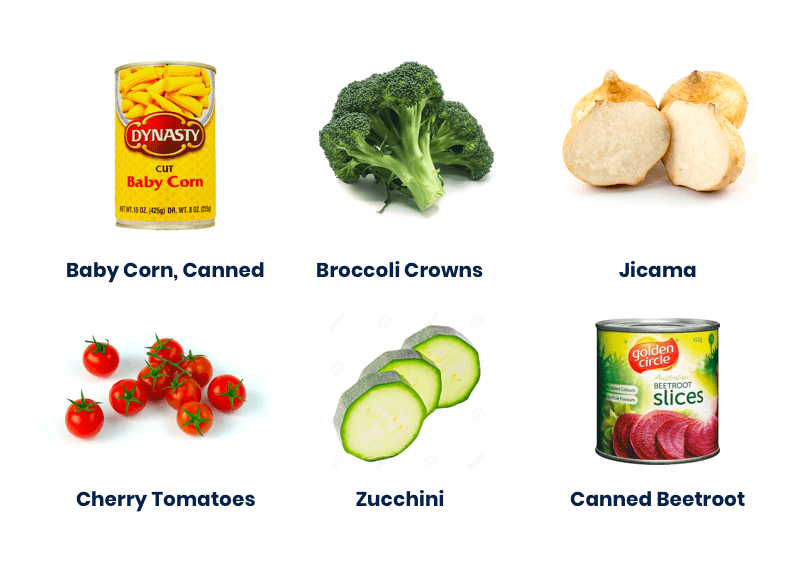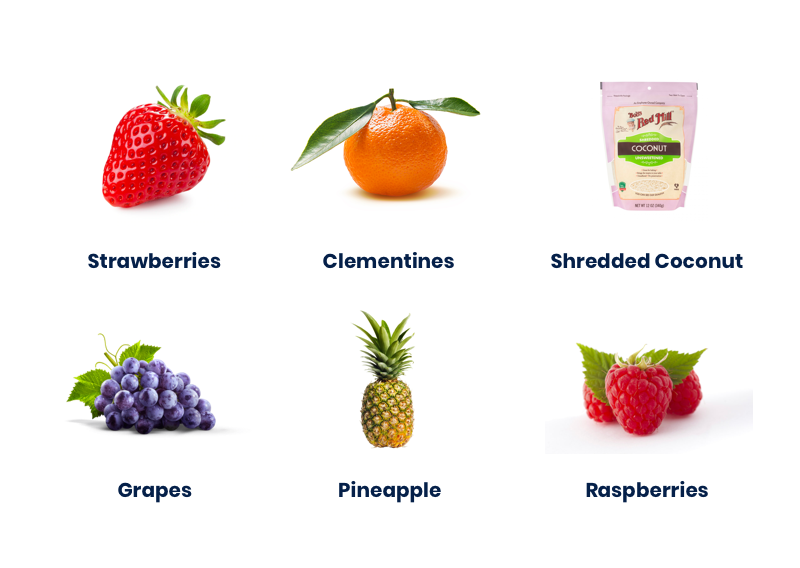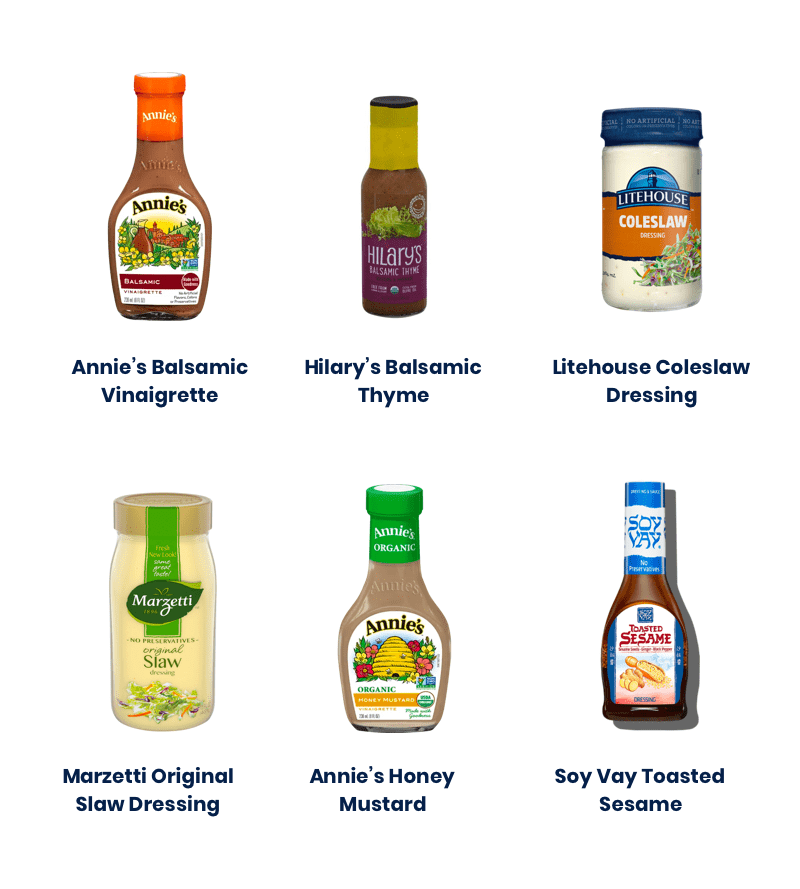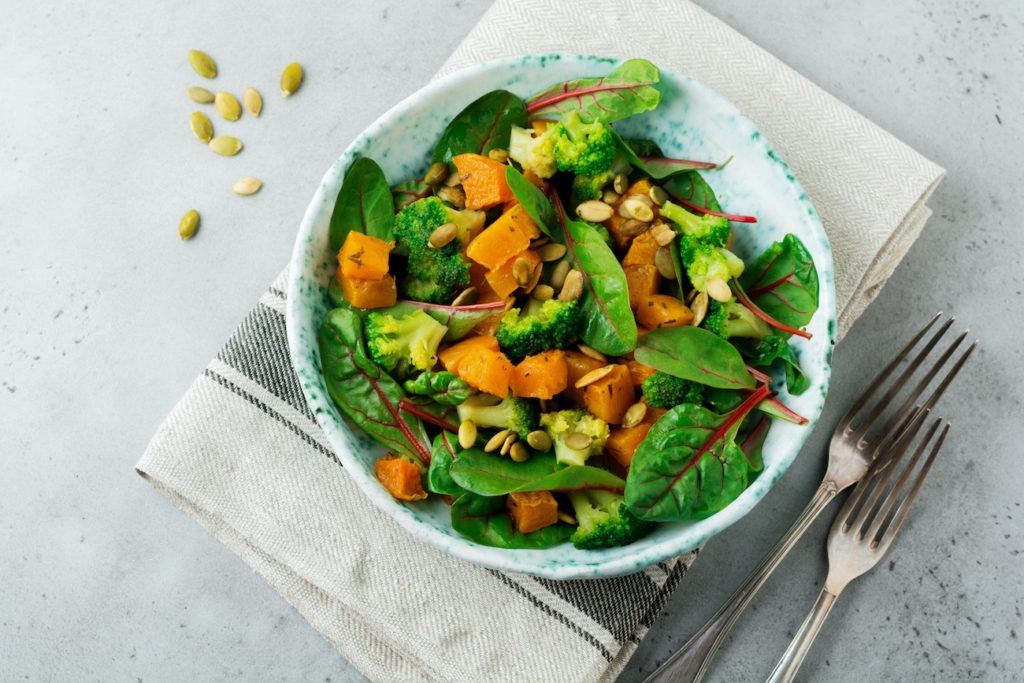As a dietitian, I often have clients describe salads as boring and unsatisfying. Though I understand where they’re coming from, I could not disagree more! Many of us just haven’t been exposed to super yummy salads, nor are we familiar with how to create one that fits our palate. That’s why I want to spend some time talking through how I make a delicious, low FODMAP salad with variety, balance and, most importantly, crunch!
New to FODMAPs? Check out our Ultimate Low FODMAP Food List – compiled by our team of registered dietitians from around the world.
Salads and IBS
As many of you know, salads are a nutritious powerhouse chock full of antioxidants, healthy fats, and lean proteins. They are also a great source of fiber, a nutrient that is essential to gut health whether you have IBS-C, IBS- D, or IBS-M. Fiber not only helps you stay regular, but it also helps bind stool. This can work magic for those who battle more with the looser side of things.
For further reading, check out my article, Fiber and IBS: What You Need to Know. It will give you more information on fiber and how it can help manage your IBS symptoms.
Low FODMAP Salad Essentials
The core ingredients in my salad are greens, fruit, nuts, and cheese (using low FODMAP fruits and nuts of course). This combination seems to win almost everyone over. I am often given the fun job of salad maker with my family and friends and this combination is definitely my go to.
Greens: Your Go-To Base
While iceberg lettuce is certainly low FODMAP, there are so many other greens to choose from. Many of the darker greens contain more antioxidants, minerals, and fiber which helps us stay fuller longer.
These greens have no FODMAPs detected so pile them on!
- Butter Lettuce
- Endive Leaves
- Red Coral
- Romaine
- Spinach, English
These greens only have trace amounts of FODMAPs so pile them on within reason.
- Arugula or Rocket Lettuce
- Iceberg
- Kale
- Radicchio Lettuce
- Spinach, baby
- Swiss Chard
Tip: massaging your kale (I know, I know) can help soften it and release some of the bitterness. Just massage the kale with a little olive oil and salt, then rinse it to remove the bitter compounds.
Vegetables: Colorful Toppers
Adding a few veggies will add a lot more flavor and texture. To give your salad eye appeal, think the rainbow when choosing your vegetables.

To keep your FODMAP bucket in check, pay attention to the portion sizes for certain veggies. Monash states that you can eat reasonable servings of green light foods at one sitting, so adjust intake based on your appetite and comfort level. Here is a longer list of FODMAP-friendly vegetables.
- Baby corn, canned
- Bok choy
- Broccoli crowns
- Canned artichoke hearts
- Canned beets
- Celery*
- Cherry tomato
- Chinese cabbage
- Common cabbage
- Cucumber
- Fennel bulb*
- Green peas, canned and drained*
- Green peas, thawed*
- Hearts of palm
- Jicama
- Kohlrabi
- Leek leaves*
- Red cabbage
- Savoy cabbage
- Sweet corn*
- Tomato
- Water chestnuts
- Zucchini*
*Check the Monash app for appropriate serving sizes on these veggies, or read our article on Low FODMAP Portions.
Feel free to be heavy handed with these vegetables as they contain either no or only trace amounts of FODMAPs!
- Bean sprouts
- Carrots
- Red bell peppers
- Olives
- Cucumbers
Roasted Vegetables: consider adding roasted vegetables like parsnips, turnips, carrots, sweet potatoes, kabocha squash/pumpkin, and broccoli to your salad.
Grilled Vegetables: time to fire up that grill and throw on some sliced zucchini, yellow squash, and eggplant. Or maybe you can grill up some cabbage steaks, radicchio, or romaine lettuce. Just slice in thick chunks, drizzle with a little olive oil, and toss directly on the grill for 4-8 minutes per side.
Tip: make a big batch of vegetables so you can use leftovers for your salads over the next few days.
Grains: A Filling Mix-in
To make your salad really satisfying, add in your favorite grain or experiment with a new one. My go-to’s include quinoa, sweet potatoes, roasted white or purple potatoes, sorghum, and brown or black rice. Again, it’s a good idea to bulk cook some grains or potatoes, so you can easily toss them in your salad.
Tip: If you prefer a warmer salad, heat up your grains separately before adding them in.
Fruits: Sweet Accoutrements
Fruit is my secret weapon in salad making. This little bit of sweet really makes your salad pop with flavor. Watch your portions though! I recommend limiting yourself to only one low FODMAP fruit to keep a lid on that FODMAP bucket.

Here is a longer list of low FODMAP fruits that pair well with salads:
- Blueberries*
- Cantaloupe
- Clementines
- Coconut or shredded dried coconut*
- Craisins or Raisins, or Currants*
- Grapes
- Kumquats
- Mandarin oranges
- Oranges
- Papaya
- Pineapple
- Pomegranate seeds
- Raspberries
- Strawberries
*Check the Monash app for appropriate serving sizes on these fruits.
Which fruits should you leave out? Learn that and more by reading our list of the Top 50 FODMAP Ingredients found in packaged foods.
Adding the CRUNCH
Now it’s time to add the crunch with some nuts or seeds. Choose one serving of a low FODMAP nut or seed.
- Almonds* are super versatile. Try purchasing sliced or slivered almonds for easy salad toppings.
- Hazelnuts* – try roasting in a dry skillet for even more flavor.
- Hemp Seeds are an easy way to make your salad a superfood salad as they provide protein and healthy fat.
- Macadamias – these pair well with tropical fruits such as papaya, pineapple, and shredded coconut.
- Peanuts pair well in many Asian-themed salads.
- Pine Nuts can be added raw or try roasting in a dry skillet for more flavor.
- Pumpkin and Pepita Seeds are mild in taste and pair well with most salads.
- Sesame Seeds can be tossed into your as the finishing step for a little crunch.
- Sunflower Seeds are inexpensive and flavorful especially if you opt for the roasted variety.
- Walnuts and Pecans – crushed or pieces make salad prep a breeze.
*Check the Monash app for appropriate serving sizes.
Tip: store nuts in your refrigerator or freezer to keep them fresher longer.
Packing on the Protein
Still hungry? Add a serving of protein if you plan on making your salad more of a meal. It can really help keep you feeling full and satisfied longer.
Some of my favorite quick protein sources are:
- ¼ cup canned and drained chickpeas
- ½ cup canned and strained lentils
- ¼ cup drained and canned black beans
- ¼ cup boiled green or red lentils
- Marinated tofu (baked, firm)
- Tempeh
- Hard boiled eggs
- Chicken or turkey
- Bacon
- Salmon or tuna
- Lactose-free cottage cheese
Toss with a Low FODMAP Salad Dressing
Dressings can be tricky as many prepared products contain garlic, onion, and even high fructose corn syrup. Many homemade salad recipes also use garlic and onion recipes. However, these can be easily modified using garlic-infused oil and the tips of a green onion. If you are looking for already prepared salad dressings, you may want to check out these low FODMAP certified options.
Here are a few salad dressings that appear low FODMAP after reviewing the food label:

Check out the Spoonful app for more. Just search “dressing” and discover what products are given the green light.
Tip: honey is compliant in small servings. If the added sugar is 7 grams of less, then it falls within a low FODMAP serving size.
Another simple option is to make your own. Oil and vinegar is as basic as you can get, and of course, it is also low FODMAP. Here are some low FODMAP salad dressing ideas from Kate Scarlata, RDN.
More Mix-ins
Herbs add a bit of pizzazz to your salad. Basil, chives, cilantro, mint, parsley, tarragon, and dill can really compliment your salad creation. Not sure which herbs go with what? Check out this handy herb pairing chart.
Roasted Chickpeas – make your own using canned and drained chickpeas. Here is a simple recipe to try. These store well in a mason jar for a quick add-in.
Homemade Sourdough Croutons – my friend gave me a clever idea of freezing leftover sourdough ends. After I collect them for a while, I defrost, add olive oil, salt, and rosemary. I then bake them up until they are nice and crispy.
Savory Granola. Casa de Sante offers a few savory granola options that add a lot of flavor and crunch.

Our Favorite Low FODMAP Salad Combinations
- Arugula + strawberries + feta + almond slices + quinoa + basil
- Romaine + black olives + feta + cucumber + garbanzo beans + tomato + thyme
- Butter lettuce + ½ serving papaya + ½ serving pineapple + 2 tablespoon dried coconut + macadamia nuts
- Grilled romaine heart halves + cherry tomatoes + parmesan cheese + oregano
- Leaf lettuce + sliced oranges + walnuts + gorgonzola cheese + mint
- Spinach + hazelnuts + craisins + goat cheese +
- Leaf lettuce + jicama + drained black beans + manchego cheese + cilantro
- Kale + craisin + pecans + goat cheese + homemade sourdough croutons
I hope this article gets your creative salad making juices flowing. Do you have any favorite low FODMAP salad recipes to share? Share your thoughts in the comments below!

I was feeling SO overwhelmed until I read this article. Thank you for these great ideas!
Hey Lori – you’re very welcome. Glad we could help!!
Just getting into fodmaps and it’s been so overwhelming and confusing. Bookmarked this page. Thank you so much.
Thank you. Very inspirational and so perfectly simplified. No more boring salads ?.
It will be great salads from now. ??
My newest low FODMAP salad
1 head butter lettuce
3 small golden beets
1 small yam
3-4 rainbow carrots
Broccoli
Corn
Cherry tomatoes
Sun dried tomatoes
Gorgonzola crumbles
Candies pecan crumbles
Steam the beets, carrots and yams and cook them add to the salad. Enjoy!
This salad recipe is a game-changer! I love how you’ve made it easy to enjoy flavors without the FODMAPs. Can’t wait to try the dressing! Thanks for sharing!
I loved this low FODMAP salad recipe! The combination of flavors and ingredients you suggested is fantastic. I can’t wait to try the dressing you recommended! Thank you for making healthy eating so enjoyable!
I absolutely loved this low FODMAP salad recipe! The combination of ingredients is so refreshing, and it’s great to finally find a salad that doesn’t upset my stomach. Can’t wait to try it with some variations! Thank you for sharing!
This salad looks amazing! I love that it’s low FODMAP and packed with so many fresh ingredients. Can’t wait to try out the dressing recipe—sounds delicious! Thank you for sharing!
This salad looks delicious! I love that it’s low FODMAP as I’ve been trying to manage my IBS. The combination of ingredients is so fresh and vibrant. Can’t wait to try it with my favorite proteins added! Thanks for the recipe!
This salad recipe looks amazing! I love how you’ve incorporated delicious low FODMAP ingredients that are still packed with flavor. Can’t wait to try it out for my meal prep this week! Thank you for sharing!
This salad looks amazing! I love how you’ve incorporated low FODMAP ingredients—it’s so helpful for those of us with sensitive stomachs. Can’t wait to try it out with some of my favorite toppings! Thanks for sharing!
I absolutely loved this low FODMAP salad recipe! The combination of flavors is fantastic, and it’s great to finally find meals that are both delicious and gut-friendly. Can’t wait to try it with some variations. Thanks for sharing!
I loved this post! The low FODMAP salad ideas are so creative and delicious. I can’t wait to try the dressing recipe—it’s nice to find something that’s both gut-friendly and packed with flavor. Thanks for sharing!
This salad looks amazing! I love how you’ve made it both delicious and low FODMAP. Can’t wait to try it out with some of my favorite veggies. Thanks for sharing your tips!
This salad recipe is a game changer! I love how it combines fresh ingredients while keeping it low FODMAP. Can’t wait to try the dressings you suggested—thanks for sharing!
This salad looks amazing! I love how you’ve incorporated low FODMAP ingredients while still making it flavorful. Can’t wait to try the dressing – it sounds delicious and easy to make. Thanks for sharing such a great recipe!
This salad looks delicious and perfect for a low FODMAP diet! I love how you incorporated so many fresh veggies and flavors. Can’t wait to try it out, especially with that dressing you recommended! Thank you for sharing!
This salad looks amazing! I love how you incorporated low FODMAP ingredients while still making it colorful and flavorful. Can’t wait to try it out and share it with my friends! Thank you for the great recipe!
This salad looks fantastic! I love that it’s low FODMAP and packed with flavor. Can’t wait to try the dressing you recommended! Thank you for sharing such a delicious recipe!
This salad looks amazing! I love the idea of incorporating low FODMAP ingredients while still making it flavorful. Can’t wait to try the dressing you suggested; it sounds delicious! Thank you for sharing!
This salad looks amazing! I love how it caters to a low FODMAP diet while still being packed with flavor. Can’t wait to try out those ingredient combinations. Thanks for sharing!
I absolutely love the ideas in this post! The combination of flavors you suggested sounds delicious and perfect for those of us following a low FODMAP diet. I can’t wait to try out the dressing recipe! Thank you for sharing such helpful tips!
This low FODMAP salad recipe looks delicious! I love how you’ve included a variety of colors and textures. Can’t wait to try the dressing—it sounds like the perfect finishing touch. Thanks for sharing!
This salad sounds amazing! I love how you’ve incorporated low FODMAP ingredients while still making it craveable. Can’t wait to try it for a fresh and gut-friendly meal. Thanks for sharing these recipes!